At the biggest international biannual lighting show, Light +Building 2016 in Frankfurt, Germany, exhibitors try to dazzle visitors with innovative technology or breathtaking visual effects. Samsung, though, has taken a more down to earth approach this year and removed some of the wow factor. Instead, it is focusing on acquiring orders and sealing business deals with products already in the mass production phase at the show.
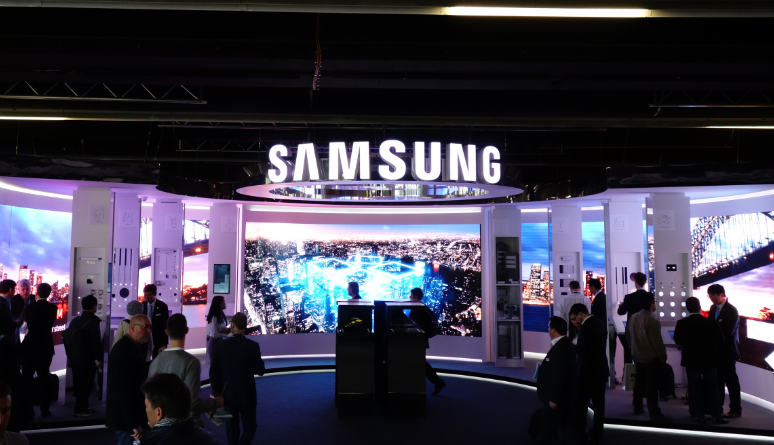 |
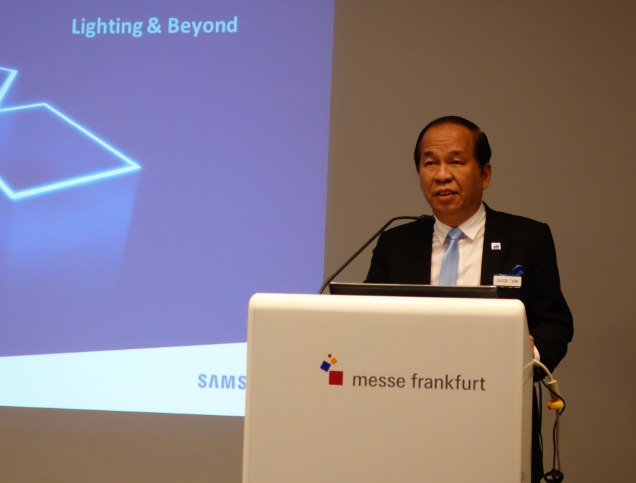 |
|
Top: Samsung's booth at Light+Building 2016. Bottom: Jacob Tarng, Executive Vice President, LED Lighting Business Team, Samsung Electronics. (All photos courtesy of LEDinside) |
Two years ago the company attracted a large crowd when it showcased its R&D capacity by highlighting Nano LED, a LED that uses different materials to grow RGB LEDs on a single EPI-wafer, and removes the use of phosphor powder altogether. The product did not make a comeback to Samsung’s booth at the 6-day lighting show this year, instead the company is emphasizing four of its main building blocks in LEDs.
The presentation hosted by Jacob Tarng, Executive Vice President, LED Lighting Business Team, Samsung Electronics at its booth covered four major LED solutions, the company’s Premium Lineup, Package Solution, Next Generation Lighting and Smart Lighting Modules.
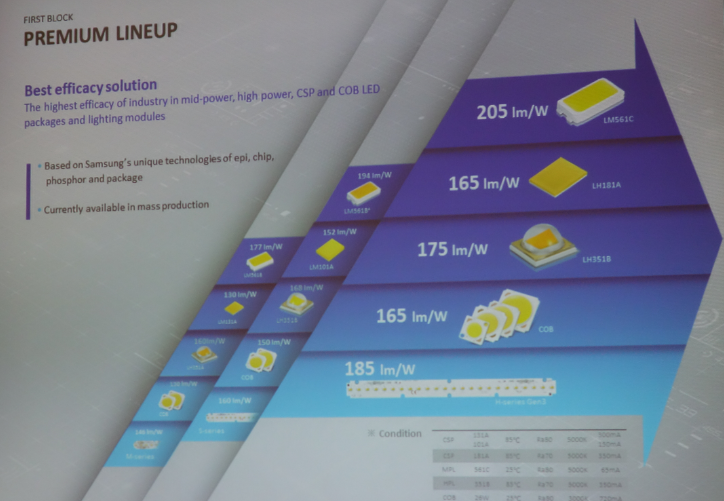 |
|
Samsung Electronic's Premium Lineup LED. |
Premium Lineup LED deliver high lm/W performance
Playing on its strength as a Samsung Electronic backed company the vertical integrated solution provider technology capacity includes EPI-wafers, LED chips, package, and in-house manufactured phosphor powder. The company is capable of creating high CRI LED products, and mid-power LED solutions with high luminous efficacy performance of 205 lm/W to 210 lm/W, said Tarn. As for the company’s high power LEDs with efficacy performance of over 160 lm/W. As for color performance parameters, which delivers a high color performance of CRI Ra 95+, within 3-step MacAdam ellipse.
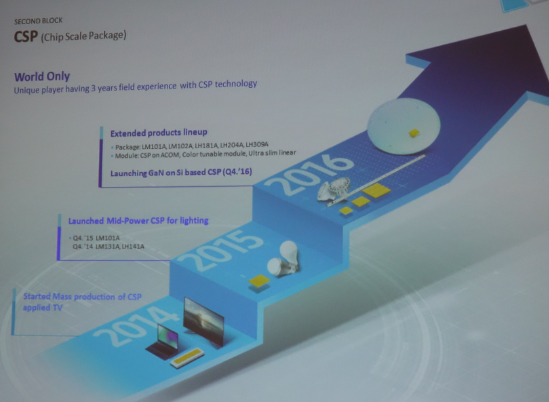 |
|
Samsung's CSP LED roadmap for the last three years. |
Samsung to introduce GaN-on-Si CSP LEDs in 2016
The company’s CSP LEDs has a comprehensive portfolio that ranges from low to high power array applications. Having launched the CSP LED product three years ago, Samsung Electronic has been incorporating the LED business arm’s CSP LEDs in display backlight applications, and has tested using the CSP LEDs for general lighting applications last year, said Tarn. The aim for this year is to expand CSP LED general lighting applications this year.
Additionally, the company plans to utilize GaN-on-Si technology platform in its CSP LEDs this year to boost the chip’s price-performance (lm/$), which is expected to be launched sometime in late 2016. Currently, GaN-on-Si based LED chips make up a very small percentage of the company’s product portfolio, but the company intends to gradually scale up related production, said a Samsung representative. Samsung CSP LED cost advantages is mostly from enlarging wafer sizes in production from 4-inch to 8-inch wafers, said Tarn.
The CSP LEDs small form factor has enabled the Korean manufacturer to provide clients with design flexibility, and fast market adoption with a single certification, which has lowered inventory burden, added Tarn.
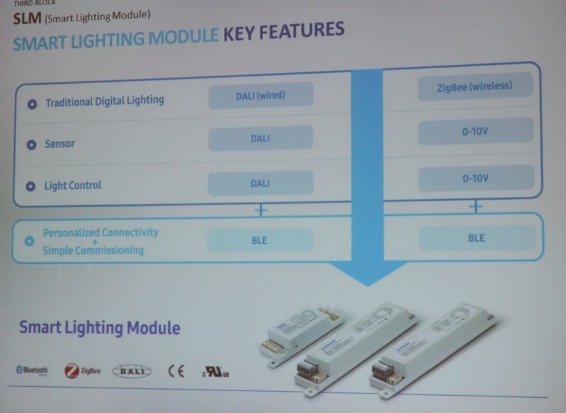 |
|
Samsung's Smart Lighting Modules (SLM). |
Smart Lighting Module (SLM) takes an open platform approach
Ahead of Light+Building 2016, Samsung released several new smart lighting products. The company’s approach to smart lighting is to offer an open platform or API, which can encompass different communication protocols such as Zigbee, WIFI, and Bluetooth. The company’s compact all-in-one module which features plug-and-play, multiple lighting interface. The company’s Smart Lighting Platform (SLP) middleware is a downloadable user scrip and script engine with API that enables users to develop software quickly under the existing software architecture. Despite changes in hardware, the software can be easily updated with the script engine and API.
Samsung announced the SLM in 2015, which is one of the three key products for phase 1 SLP, and this year the company will be entering phase 2 for sensor network through its eco-partners till 2017, and in the final third phase offer end-to-end solutions to the market.
As part of its smart light solutions, the company is also exploring other connective technology and protocols. Samsung Electronic for instance is looking into Weave and Thread protocols, which could potentially expand smart lighting options in the near future, and has been talking to partners about the potential of exploring PoE connected lighting.
Lastly, Samsung can provide added value to its clients. Clients can receive patent protection from using Samsung logo, and the group’s resources also provide further advantages for clients.
(Author: Roger Chu, Research Director, LEDinsidehttp:// Editor: Judy Lin, Chief Editor, LEDinside)
















